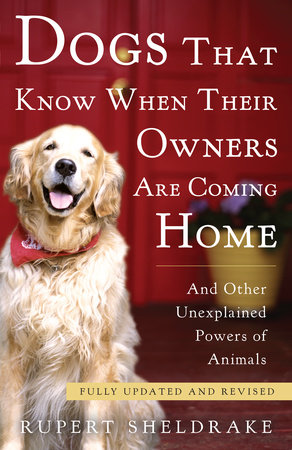Excerpt
Dogs That Know When Their Owners Are Coming Home
Part I
HUMAN-ANIMAL BONDS
Chapter 1
The Domestication of Animals
Many people love their pets and are loved by them. In this chapter I explore the evolution and the nature of human-animal bonds.
But first it is important to recognize that emotional bonds between people and animals are the exception rather than the rule. For every well-loved cat or dog, hundreds of domesticated animals are confined to intensive farming systems and research laboratories. In many Third World countries beasts of burden are often treated brutally. And traditional societies are not usually subscribers to modern ideals of animal welfare. Eskimos, for example, tend to treat their huskies harshly.
But in spite of all this exploitation, abuse, and neglect, many people form bonds with animals from childhood onward. Young children are commonly given teddy bears or other toy animals, and they like hearing stories about animals. Above all, most like keeping actual animals. The majority of pets live in households with children.
Hearing tales about frightening animals, including the wolf in "Little Red Riding Hood," and forming relationships with friendly ones seems to be a normal and fundamental aspect of human nature. Indeed our nature has been shaped throughout its evolutionary history by our interactions with animals, and all human cultures are enriched by songs, dances, rituals, myths, and stories about them.
The evolution of human-animal bonds
The earliest named hominid species, known from fossil remains, are Australopithecus ramidus and Australopithecus anamensis, dating back over 4 million years. The first stone tools were used about 2 1/2 million years ago, and signs of meat eating appear about a million years later, around the time that Homo erectus spread out of Africa into Eurasia (Figure 1.1). The use of fire may have begun around 700,000 years ago. Modern humans originated in Africa about 150,000 years ago. The first cave paintings, including many of animals, appeared about 30,000 years ago. The agricultural revolution began about 10,000 years ago, and the first civilizations and written scripts about 5,000 years ago.
Our ancestors lived as gatherers and hunters, with gathering far more important than hunting. The old image of man the hunter striding confidently out onto the African veldt is a myth. Only a small proportion of the food eaten by today's hunter-gatherers comes from animals hunted by the men; most comes from gathering done mainly by women. The exceptions are the hunter-gatherers of the plant-poor Arctic regions. Hominids and early Homo sapiens obtained small amounts of meat more by scavenging the kills left by more effective predators like big cats than by hunting for themselves. Big game hunting, as opposed to scavenging, may date back only some 70,000 to 90,000 years.
In hunter-gatherer cultures, human beings do not see themselves as separate from other animals but as intimately interconnected. The specialists in communication with the nonhuman world are shamans, and through their guardian spirits or power animals, shamans connect themselves with the powers of animals. There is a mysterious solidarity between people and animals. Shamans experience themselves as being guided by animals or as changing into animals, understanding their language, and sharing in their prescience and occult powers.
The earliest domesticated dogs
The first animals to be domesticated were dogs. Their ancestors, wolves, hunted in packs, just as men hunted, and from an early stage dogs were used in hunting as well as for guarding human settlements. Their domestication predated the development of agriculture.
The conventional view is the domestication of wolves began between 10,000 and 20,000 years ago. But recent evidence from the study of DNA in dogs and wolves points to a far earlier date for the first transformation of wolf to dog, over 100,000 years ago. This new evidence also suggests that wolves were domesticated several times, not just once, and that dogs have continued to crossbreed with wild wolves.
If this theory is confirmed, it means that our ancient companionship with dogs may have played an important part in human evolution. Dogs could have played a major role in the advances in human hunting techniques that occurred some 70,000 to 90,000 years ago.
The Australian veterinarian David Paxton goes so far as to suggest that people did not so much domesticate wolves as wolves domesticated people. Wolves may have started living around the periphery of human settlements as a kind of infestation. Some learned to live with human beings in a mutually helpful way and gradually evolved into dogs. At the very least, they would have protected human settlements, and given warnings by barking at anything approaching.
The wolves that evolved into dogs have been enormously successful in evolutionary terms. They are found everywhere in the inhabited world, hundreds of millions of them. The descendants of the wolves that remained wolves are now sparsely distributed, often in endangered populations.




